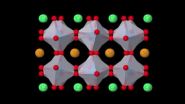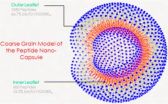(Press-News.org) Most drivers have experienced a traffic signal that turns yellow just as they approach an intersection, which makes it difficult for them to decide whether to stop or proceed through it. The wrong choice in this critical situation, known as the "dilemma zone," may lead to crashes, especially at high-speed intersections. A new study published in Human Factors examines how intelligent warning systems help drivers negotiate the dilemma zone and encourage safer driving behavior.
"Intelligent systems could improve driver safety by potentially reducing crashes at signalized intersections," said Leo Gugerty, a coauthor of "Effects of Intelligent Advanced Warnings on Drivers Negotiating the Dilemma Zone" and professor of psychology at Clemson University. "Statistics from the Federal Highway Administration show that signalized intersections are dangerous places, and our study provides some evidence that intelligent dilemma zone warnings help drivers behave more safely when approaching them."
Researchers Leo Gugerty, Scott McIntyre, Drew Link, Karl Zimmerman, Devendra Tolani, Peter Huang, and Robert Pokorny designed two driving simulator studies to compare the effectiveness of six types of roadway or in-vehicle warning systems. Participants were asked to navigate through dilemma zone traffic lights while their driving responses were measured based on the presence or absence of warning signals.
"Sometimes drivers respond to safety measures in ways that undo safety benefits, such as driving faster when using antilock brakes," said Gugerty. "However, the drivers in our simulator studies responded to the dilemma zone warning signals by driving more safely."
Results indicated that both roadway and in-vehicle warnings led to more stopping and milder decelerations at dilemma zone intersections. When given advanced warning, the participants rarely exhibited unsafe driving behavior, such as accelerating to beat the light. In time, implementation of such systems could lead to fewer traffic-related injuries and fatalities.
INFORMATION:
To receive a copy of the article for reporting purposes, contact HFES Communications Director Lois Smith (310/394-1811; lois@hfes.org).
The Human Factors and Ergonomics Society is the world's largest nonprofit individual-member, multidisciplinary scientific association for human factors/ergonomics professionals, with more than 4,600 members globally. HFES members include psychologists and other scientists, designers, and engineers, all of whom have a common interest in designing systems and equipment to be safe and effective for the people who operate and maintain them. "Human Factors and Ergonomics: People-Friendly Design Through Science and Engineering"
Plan to attend the HFES 2014 International Annual Meeting, October 27-31, Hyatt Regency Chicago.
Intelligent warning systems may make 'dilemma zone' safer
2014-04-02
ELSE PRESS RELEASES FROM THIS DATE:
Longer stay in hospital ICU has lasting impact on quality of life
2014-04-02
Patients have substantial physical impairments even two years after being discharged from the hospital after a stay in an intensive care unit (ICU), new Johns Hopkins research suggests.
The scientists found that for every day of bed rest in the ICU, muscle strength was between 3 and 11 percent lower over the following months and years.
"Even a single day of bed rest in the ICU has a lasting impact on weakness, which impacts patients' physical functioning and quality of life," says Dale M. Needham, M.D., Ph.D., an associate professor of medicine and of physical medicine ...
Drexel researchers open path to finding rare, polarized metals
2014-04-02
VIDEO:
Researchers in Drexel's College of Engineering have discovered a way to classify and predict the existence of a rare breed of electrically conductive polar metals.
Click here for more information.
PHILADELPHIA - Drexel University researchers are turning some of the basic tenets of chemistry and physics upside down to cut a trail toward the discovery of a new set of materials. They're called "polar metals" and, according to many of the scientific principles that govern the ...
A rainy day can ruin an online restaurant review
2014-04-02
After looking at 1.1 million online reviews for 840,000 restaurants in more than 32,000 cities across the country, Georgia Tech and Yahoo Labs researchers have found that the weather outside can be just as significant a factor for reviews as what happens inside a restaurant. Their study shows evaluations written on rainy or snowy days, or very cold or hot days, are more negative than those written on nice days.
"People love to describe themselves as foodies. But in the end, it looks like we're all weather people, whether we realize it or not," said Saeideh Bakhshi, a ...
Pharmocogenomics has not fulfilled its promise to developing countries
2014-04-02
From 1997 to 2010, despite promises made by the international scientific community, pharmacogenomic research produced few studies focusing on rare, orphan and tropical diseases prevalent in developing countries. Catherine Olivier, bioethics research at the University of Montreal's School of Public Health, recently published these findings in the journal Global Public Health.
Pharmcogenomics is a field of scientific research that studies the interaction between the genomic information of individuals (or populations) and their responses to drugs. In addition to its promising ...
The science of champagne fizz: How many bubbles are in your bubbly?
2014-04-02
The importance of fizz, more technically known as effervescence, in sparkling wines and champagnes is not to be underestimated — it contributes to the complete sensory experience of a glass, or flute, of fine bubbly. A scientist has now closely examined the factors that affect these bubbles, and he has come up with an estimate of just how many are in each glass. The report appears in ACS' The Journal of Physical Chemistry B.
Gérard Liger-Belair notes that effervescence plays an important role in the look, taste, aroma and mouth feel of champagne and other sparkling wines. ...
Albertans support perinatal mental health screening
2014-04-02
After struggling with anxiety and depression since her teens, Lana Berry hit bottom at age 26. Divorced, unemployed and back living with her parents, she found herself in a dark place—"as sick as I'd ever been."
Berry persevered, pouring her energy into getting better. She found work, met the love of her life, remarried and, six years after her low point, found out she was going to be a mom. Given her past, she was understandably anxious about what to expect.
"I did have worries, but I didn't have regular conversations with doctors about depression. They would only ...
Radiation able to be securely stored in nontoxic molecule, study finds
2014-04-02
MANHATTAN, Kan. — Researchers have discovered that microscopic "bubbles" developed at Kansas State University are safe and effective storage lockers for harmful isotopes that emit ionizing radiation for treating tumors.
The findings can benefit patient health and advance radiation therapy used to treat cancer and other diseases, said John M. Tomich, a professor of biochemistry and molecular biophysics who is affiliated with the university's Johnson Cancer Research Center.
Tomich conducted the study with Ekaterina Dadachova, a radiochemistry specialist at Albert Einstein ...
From Martian rocks, a planet's watery story emerges
2014-04-02
After 18 months on Mars, the rover Curiosity has taken more than 120,000 measurements of surface rocks and soil, painting a more detailed image of how much water was once on the Red Planet. An article in Chemical & Engineering News (C&EN) describes the technique scientists are using to analyze the rocks and what they've found.
Celia Arnaud, a senior editor at C&EN, notes that Curiosity has traveled nearly 4 miles since it landed in 2012 and is more than halfway to its destination, Mount Sharp. But in the meantime, its onboard equipment is collecting a treasure trove of ...
Noisy brain signals: How the schizophrenic brain misinterprets the world
2014-04-02
People with schizophrenia often misinterpret what they see and experience in the world. New research provides insight into the brain mechanisms that might be responsible for this misinterpretation. The study from the Montreal Neurological Institute and Hospital – The Neuro - at McGill University and McGill University Health Centre, reveals that certain errors in visual perception in people with schizophrenia are consistent with interference or 'noise' in a brain signal known as a corollary discharge. Corollary discharges are found throughout the animal kingdom, from bugs ...
Strain-specific Lyme disease immunity lasts for years, Penn research finds
2014-04-02
Lyme disease, if not treated promptly with antibiotics, can become a lingering problem for those infected. But a new study led by researchers from the University of Pennsylvania has some brighter news: Once infected with a particular strain of the disease-causing bacteria, humans appear to develop immunity against that strain that can last six to nine years.
The finding doesn't give people who have already had the disease license to wander outside DEET-less, however. At least 16 different strains of the Lyme disease bacterium have been shown to infect humans in the United ...



